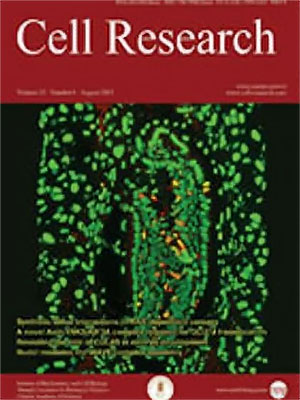
Volume 12, No 2, Jun 2002
ISSN: 1001-0602
EISSN: 1748-7838 2018
impact factor 17.848*
(Clarivate Analytics, 2019)
Volume 12 Issue 2, June 2002: 143-150
ORIGINAL ARTICLES
Recombinant scorpion insectotoxin AaIT kills specifically insect cells but not human cells
Sheng Jian JI, Feng LIU, Er Qiu LI, Yu Xian ZHU*
The National Laboratory of Protein Engineering and Plant Genetic Engineering, College of Life Sciences, Peking University, Beijing 100871, China
Correspondence:
The nucleotide
sequence deduced from the amino acid sequence of the scorpion insectotoxin AaIT
was chemically synthesized and was expressed in
Escherichia coli. The
authenticity of this
in vitro expressed peptide was confirmed by
N-terminal peptide sequencing. Two groups of bioassays, artificial diet
incorporation assay and contact insecticidal effect assay, were carried out
separately to verify the toxicity of this recombinant toxin. At the end of a 24
h experimental period, more than 60% of the testing diamondback moth (
Plutella
xylostella) larvae were killed in both groups with LC
50 value of
18.4
mM and 0.70
mM respectively. Cytotoxicity assay using cultured Sf9 insect cells and MCF-7 human
cells demonstrated that the toxin AaIT had specific toxicity against insect
cells but not human cells. Only 0.13
mM recombinant toxin was needed to kill 50% of cultured insect cells while as much
as 1.3
mM toxin had absolutely no effect on
human cells. Insect cells produced obvious intrusions from their plasma membrane
before broken up. We infer that toxin AaIT bind to a putative sodium channel in
these insect cells and open the channel persistently, which would result in Na
+ influx and finally cause destruction of insect cells.
FULL TEXT | PDF
Browse 2425


